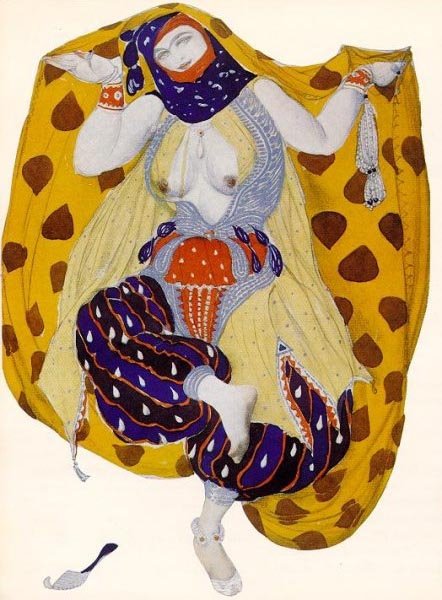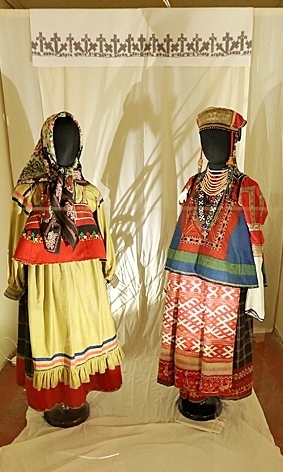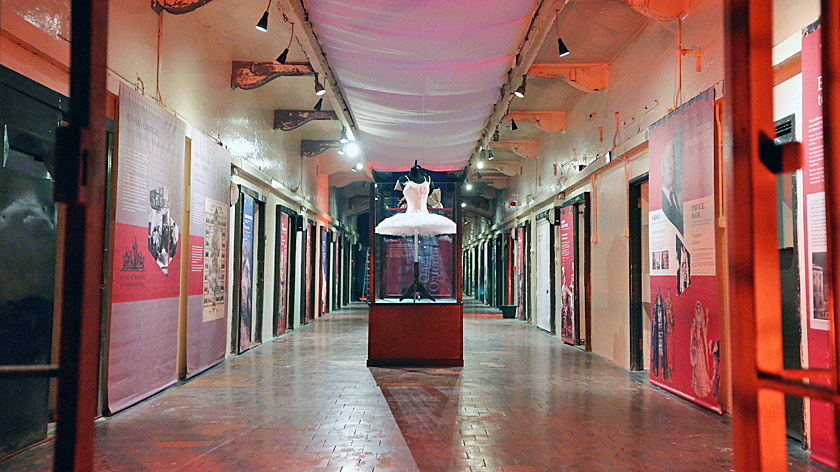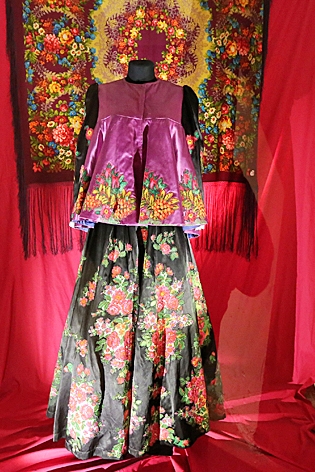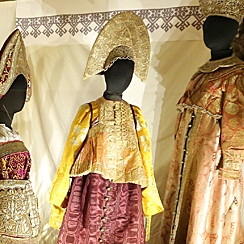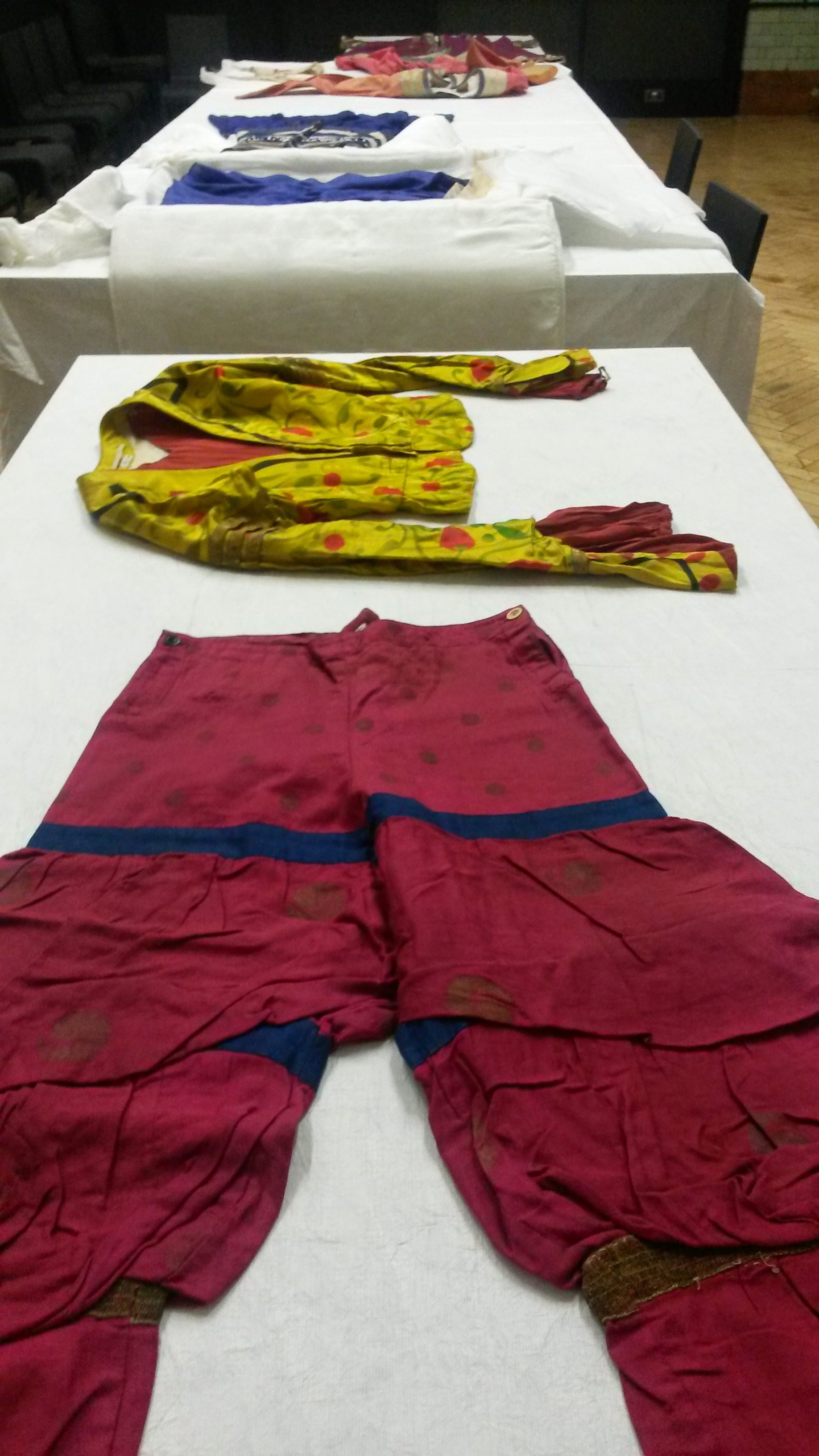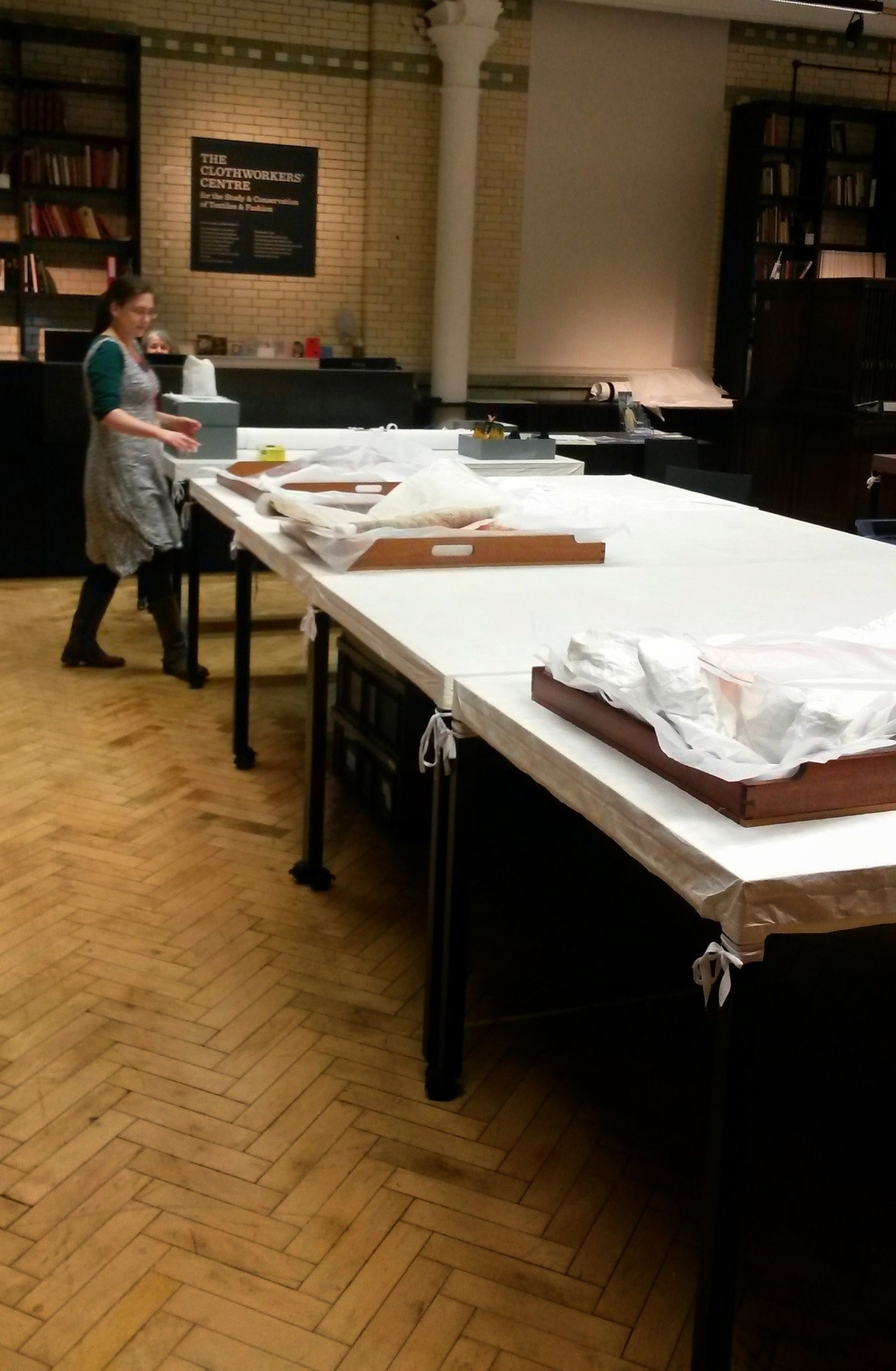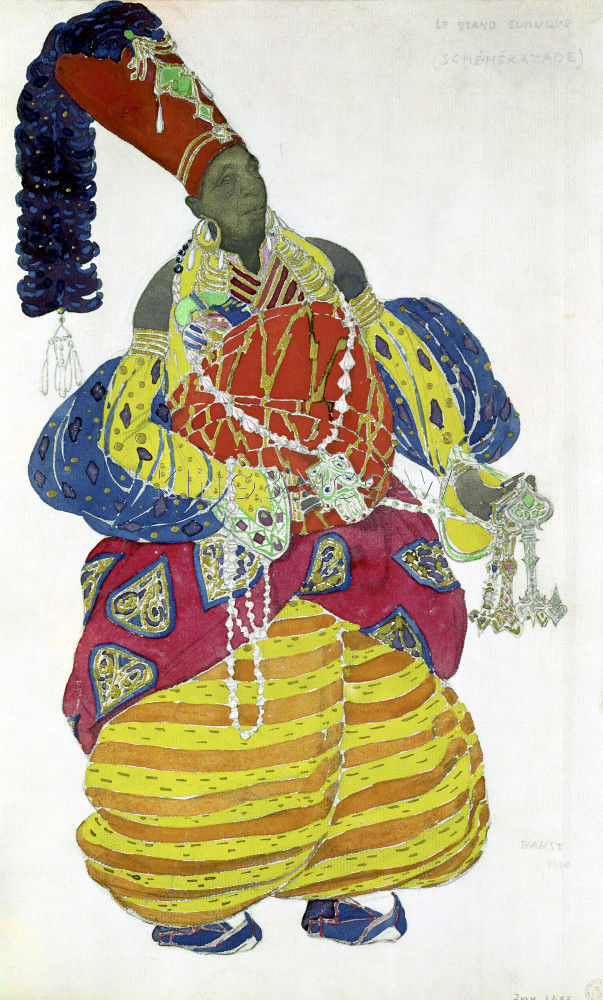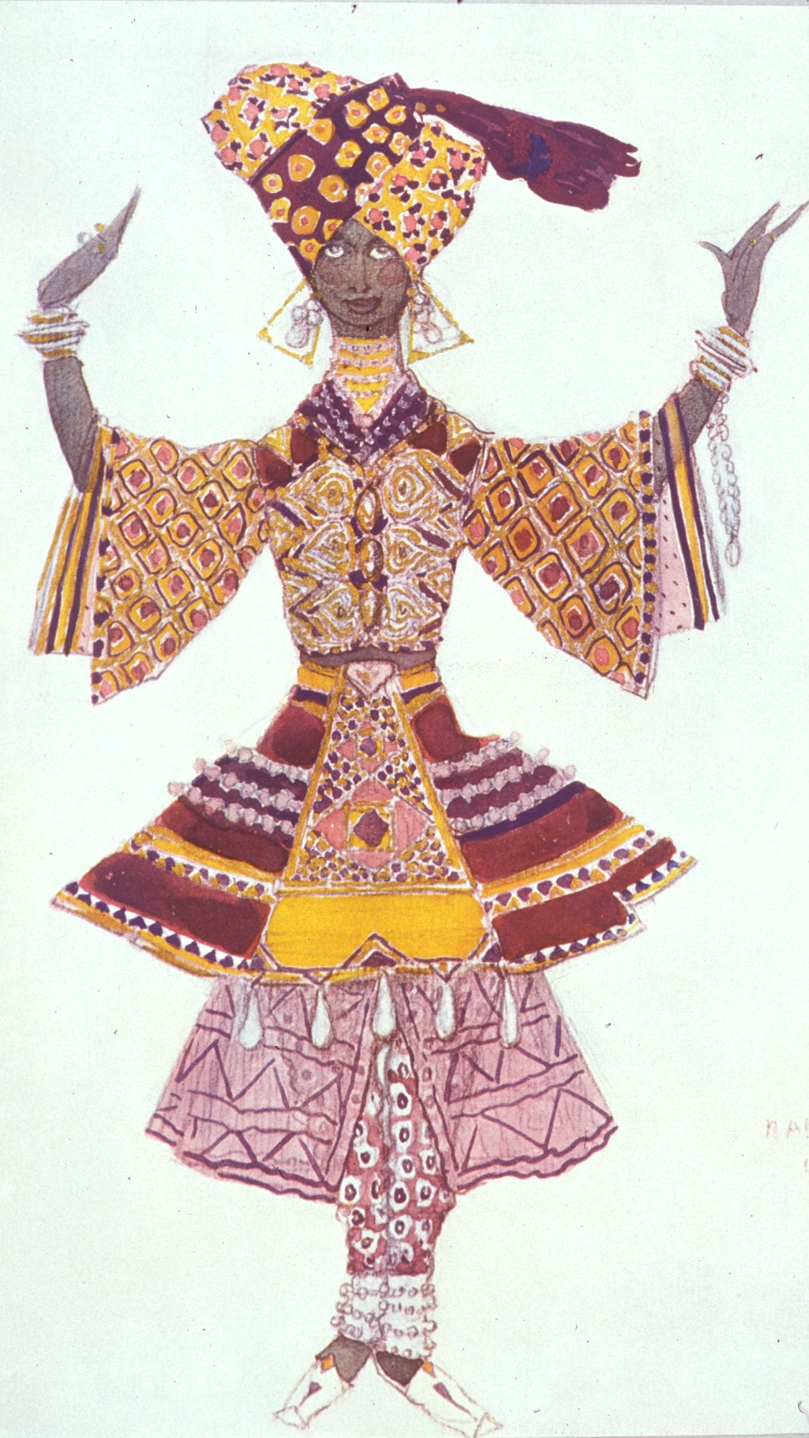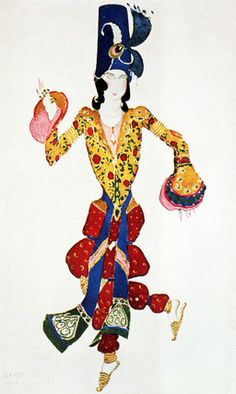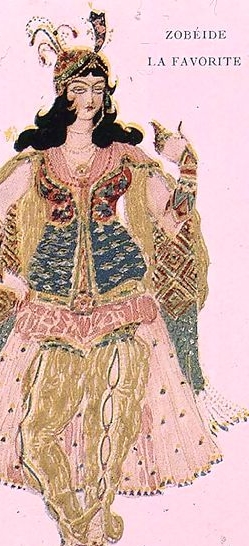I have long been fascinated by Sergei Diaghilev’s Ballets Russes and the extraordinary creative collaborations that led to their legendary productions in Paris from 1909 – 1929. Of particular interest are the sensationally exotic, captivating and opulent costume and set designs of Leon Bakst. Whilst attending, ‘From Bolshoi to Belfast: The Theatre of Costume’, curated by Lydia Kharina, an exhibition of the magnificent costumes from the Bolshoi Theatre Company in Russia, the influence of Russian folk costume on theatre design was emphasised throughout. Inspired by a thought-provoking conversation with Donatella Barbieri, Joint London College of Fashion and Victoria and Albert Research Fellow and curator of the beautiful ‘Encounters in the Archive’, I decided that I must see the costumes for myself! And with the guidance of Jane Pritchard, Curator of Dance for the Theatre and Performance Collections at the Victoria and Albert Museum, I had the wonderful opportunity to view several costumes from the Ballets Russes at The Clothworkers’ Centre for the Study and Conservation of Textiles and Fashion.
Ballets Russes
Sergei Diaghilev was the Artistic Director of the Ballets Russes from 1909 – 1929, and he recruited the most talented and avant-garde costume and set designers, choreographers, artists, composers and performers to collaborate on his theatrical productions. The inspired list of contributors include Leon Bakst, Mikhail Fokine, Mikhail Larionov, Pablo Picasso, Henri Matisse, Andre Derain, Coco Chanel, Igor Stravinsky, Richard Strauss, Claude Debussy, Anna Pavlova, Tamara Karsavina and Vaslav Nijinsky, to name but a few. The fantastical costumes show influences from Russia and the Orient with vibrant colours, sumptuous fabrics and extravagantly beaded and embroidered finishes. They are said to have astonished the Parisian audiences and their impact is still evident in Fashion and Theatre today.
From Bolshoi to Belfast: The Theatre of Costume
This marvelous exhibition curated by Lydia Kharina showcased over 50 ballet, opera and folk costumes from the prestigious Bolshoi Theatre and the Russian Museum of Ethnography. The influence of the beguiling traditional folk costumes of the Russian people are apparent in the intricately constructed and elaborately adorned theatrical costumes. It was the first time much of the collection had been seen outside Russia and it was a magnificent narrative of costume, both cultural and theatrical. The location of the exhibition augmented the atmosphere of awe and reverence as the exquisite costumes were displayed behind the bars of the prisoner’s cells in the Crumlin Gaol, Belfast.
Encounters in the Archive
Encounters in the Archive documents a practice-based research project where 6 artists/researchers responded to items from the Victoria & Albert Theatre and Performance Archive at Blythe House. As detailed in Encounters in the Archive: Reflections on Costume and Re-encounters the accompanying publications, Barbieri considers if the theatre costumes in the archive become an object in and of themselves, separate to the performance and the performer. Investigating if there is always an ‘incompleteness’ due to the lack of human presence or if this absence and space invokes an opportunity for creativity to occur.
Theatre and Costume Archive of the Victoria and Albert Museum
In February 2015, I arranged to view several of the costumes from the Ballets Russes held at the Theatre and Costume Archive of the Victoria and Albert Museum. As I approached Blythe House, formerly the central sorting depot for the Post of Office, I could barely contain my excitement and hurriedly signed the visitor’s pass.
The costumes had been carefully laid out on long tables in The Clothworkers’ Centre for Textile and Fashion Study and Conservation by Veronica Isaac, Curatorial Assistant, who accompanied me throughout my visit and patiently answered my never-ending questions. On entry into the study room, Veronica instructed me on the rules of the visit, such as the removal of all rings, the wearing of gloves at all times, the use of pencils, and the use of photography as well as instructing on how to handle and turn the items, which was to be done in a specific way with her assistance at all times.
Months before, I had requested to view costumes from Scheherazade and Chout performances that displayed the most elaborate embellishment and innovative use of colour and shape. Unfortunately some of these were too fragile to view and so, Jane Pritchard, co-curator of the V&A exhibition, Diaghilev and the Golden Age of the Ballets Russes, 1909–1929 (2010), and editor of the accompanying book, kindly made alternative suggestions.
The experience of viewing, touching and photographing the costumes was fascinating, exciting and emotive and I was struck by exactly what Donatella Barbieri had been discussing, the intimation of the performers body in its absence. The most evocative and resonating aspect was the inscription of the performers’ names on the lining of the costumes. The intimation of human presence and the narratives experienced and held within the costumes, the touring nature of the company verified in the customs stamps and the physicality of the repeated performances visible in the stains of perspiration.
When we had finished viewing the items Veronica kindly took me on a tour of the Theatre and Costume Archive which was overwhelming in its expansiveness, with long corridors lined with filing cabinets and storage racks to the ceiling, filled with colour coded boxes, neatly indexed. It was highly atmospheric due to the architecture, scientific classification, rails of costumes and incomprehensible amounts of information.


